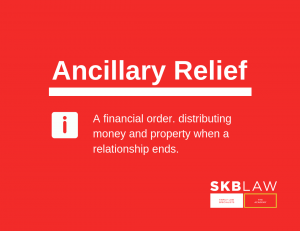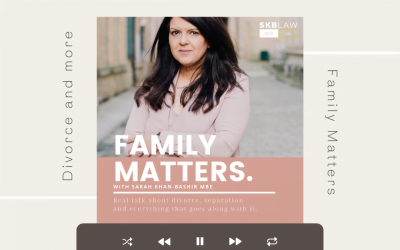You can ask a court to make a ‘financial order’ if you cannot reach an agreement. This used to be called an ‘ancillary relief order’. This means the court will decide how assets will be split.
Ancillary Relief: What you need to know
When parties divorce, not only do they need to determine who the children shall live with but they will also need to consider the finances and how they shall be distributed. The process of splitting the assets is called Ancillary Relief. This is separate from the divorce proceedings. Ancillary Relief cannot begin until divorce proceedings have been issued.
If the parties have agreed on how they wish to divide the assets then this can be drawn up in a Consent Order and filed at Court for approval. However it is extremely rare that the parties agree on how the assets should be divided. People are often under the misconception that “assets” means just the family home or the family business. Assets are everything that both parties own or control. This can include bank accounts, vehicles, property or land in the United Kingdom and abroad, pensions, shares and stocks, jewellery and expensive items.
All assets are all calculated net of any loans or mortgages secured on them. Any transfer or sale of a property that occurred within the last 3 years can also be claimed if there is a valid reason that the either party sold or transferred the property in order to defeat the claim by the other party.
The starting point of any division is always 50/50. This does not mean that it will end up at 50/50. Many factors are taken into account as to how the assets are split. One of the biggest determining factors is the age of the children and who they are living with. If the children are under 16 and living with the mother then most likely the mother will receive more shares of the assets. The traditional split where children are involved is usually 70/30 in favour of the parent that has the children.
The process of Ancillary Relief can be long and drawn out depending on the assets and the cooperation of the parties. After the application is made, both parties must complete and exchange the Form E by a set date. The Form E contains a snapshot of each of the party’s finances.
The Form E records all the assets, liabilities, employment income, needs and other factors in relation to the person’s finances. This must be filed at Court and exchanged with the other party with all the relevant evidence such as bank statements, mortgage statements and pay slips.
After this each party has the opportunity to ask the other person questions relating to the Form E. For example one party may be convinced that the other party has not declared all his/her income or assets and ask for further disclosure. More often than not the parties also fail to agree on a valuation for the matrimonial home. In these incidences the court shall order that a formal valuation is done on the house and that figure be used.
The matter is usually listed for a hearing after Form E’s are exchanged and before the questionnaires are to be answered. This allows the party’s to address any further issues at Court and also for the Court to approve the questionnaires. The following hearing is traditionally a FDR (Financial Dispute Resolution). At this stage it is encouraged that the party’s attempt to reach a settlement. It is also encouraged for either party to make each other offers and counter offers. If at this stage no agreement can still be made then the Courts will list the matter for a Final Hearing where the Court shall hear all the evidence and make a decision as to how the assets are to be split.


